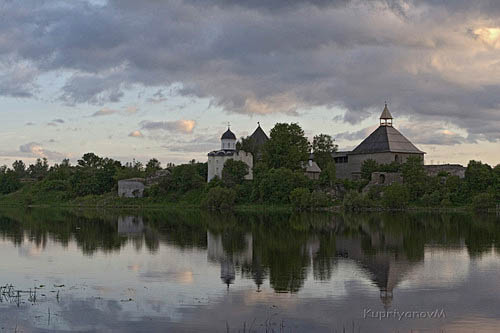
Photo Panoramio
The Fortress and the Church of St. George 1167
Karelia
under the Midnight Sun
Link to Google-Earth file Karelia.kmz
This requires that you have GE on your hard disc
Staraya Ladoga, St George in the Kreml
1167

Photo
Panoramio
The
Fortress and the Church of St. George 1167

Photo
Panoramio
The
Church of St. George 1167
According to the
Hypatian Codex, the legendary Varangian leader Rurik arrived in
Ladoga in 862 and made it his capital. Rurik's successors later moved
to Novgorod and then to Kiev, thus laying foundations for the
powerful state of Kievan Rus. There are several huge kurgans, or
royal funerary barrows, at the outskirts of Ladoga. One of them is
said to be Rurik's grave. Archaeological evidence suggests that
Ladoga gradually evolved into a primarily Varangian settlement. The
Novgorodians built a citadel there with five towers and several
churches. The fortress was rebuilt at the turn of the 15th and 16th
centuries, while the mid-12th-century churches of St. George and of
Mary's Assumption stand in all their original glory.

Photo
Wikipedia
St. George and the dragon. Fresco 1167.
Inside St.
George's, some magnificent 12th-century frescoes are still visible.
Ferapontov Monastery
1398 – 1490

Photo
Panoramio
High Summer at the Ferapontov Monastery
The monastery
was founded by St. Ferapont in 1398 in the inhospitable Russian
North, east of the Kirillo-Belozersky Monastery. The fame of the
monastery started to spread under Saint Martinian, who was to become
a father superior of the Troitse-Sergiyeva Lavra in 1447.
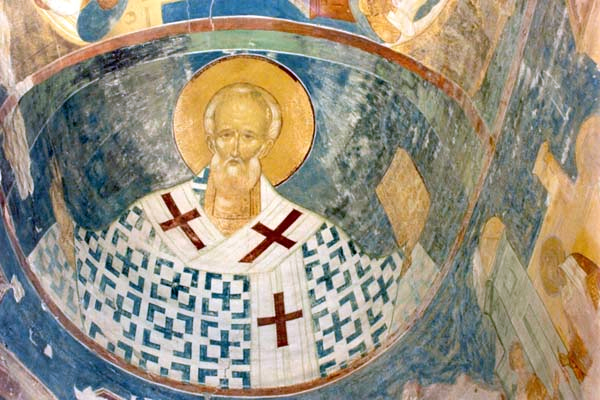
Photo
Wikipedia
St Nicholas, the patron saint of Russian merchants, fresco by
Dionysius 1490
The newly restored frescoes in the Church of the
Nativity of the Virgin (1490) are the only surviving frescoes by
Dionysius.
See
also the Dionysius
Website
Link to the
The
Dionysius Deesis in the Iconostasis of the Nativity Cathedral
The
iconostasis of the Nativity Cathedral is one of few surviving master
pieces of Dionysius. Because of its size it has a seperate page on my
website.
Kirillov-Belozersky Monastery
1397 - 18th cent
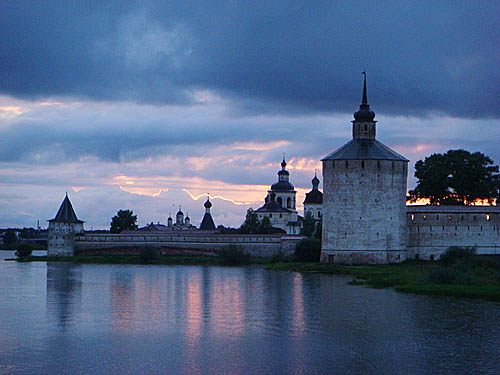
Photo
Panoramio
The
Monastery on the shores of Lake Siverskoye is dedicated to the Feast
of the Dormition of the Theotokos. The whole medieval town stretches
out on the shore of the magnificent Siverskoye Lake. On the territory
of 12 hectares there are 11 stone churches of the 15th-18th
centuries, numerous service structures surrounded with walls and
towers of “The Great Fortress of the Tsar”.
The
monastery was founded in 1397 by St. Kirill of Beloozero, following
the advice of his teacher, St. Sergius of Radonezh. In the 16th
century, the monastery was the second richest landowner in Russia,
after its model, the Trinity Monastery near Moscow.
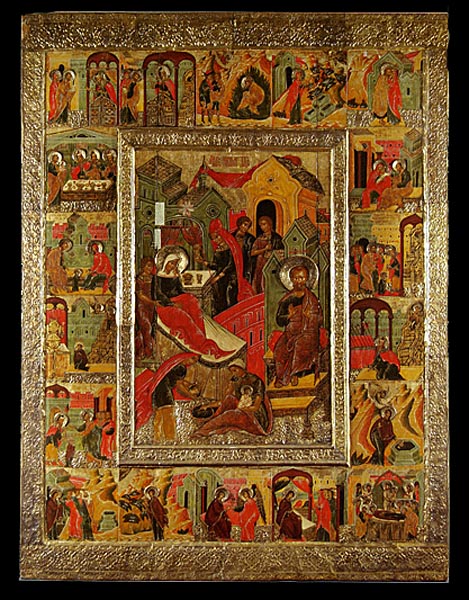
Photo
RWFG 1977
Nativity of the Virgin, Kirillov-Belozersky
Monastery, 15th cent, now Russ. Museum, St Petersburg
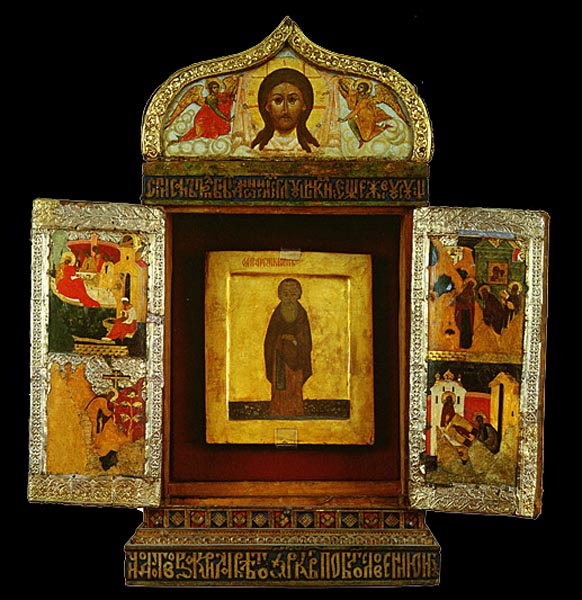
Icon
and icon case "St Kirill Belozersky" 1614. Nikita Ermolov,
Russ. Museum St Petersburg
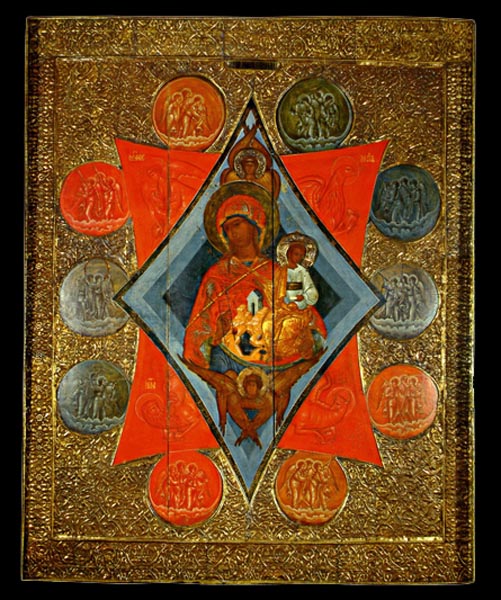
Our
Lady of the Burning Bush. second half of the 16th century, Russ.
Museum St Petersburg
Text and photos from the Official
Website of the Monastery
Vologda Kreml
1570 - 1659
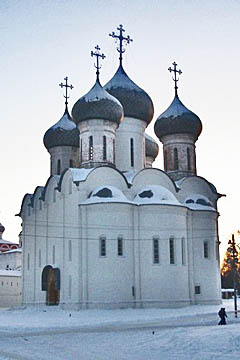
Photo
Panoramio
Sofia Cathedral in the Vologda Kreml
Consecrated in 1570 and named after Saint Sophia Cathedral in Novgorod, was one of the largest cathedrals built in Russia up to that time. It had been ordered by Ivan the Terrible to be rebuilt in stone in the 15th century. Its superb frescoes were painted in 1686–1688 by Dmitry Plekhanov from Yaroslavl. A lofty octagonal belltower was added in 1654–1659 and built up in the nineteenth century. A local museum occupies the neighbouring Treasury chambers (1659).
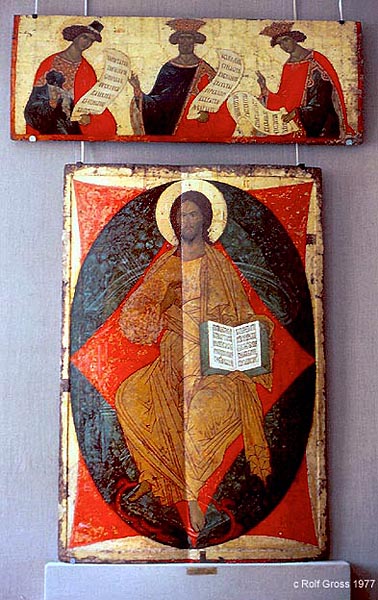
Photo
RWFG 1977
Christ in Glory with Prophet Daniel, King David,
and Solomon, from the deesis of the Vologda Sophia Cathedral, 1497,
now in the Tretyakov Gallery, Moscow
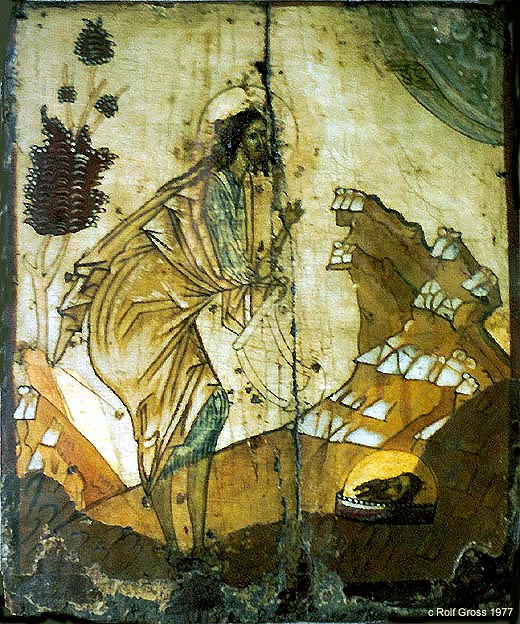
Photo
RWFG 1977 - for reference see icon-art.com
John
Baptist the Forerunner (40 × 33 cm, Vologda, early 15th cent).
- I saw and photographed this small icon once at the Rubelyov Museum
in the Andronikov Monastery in Mocow - and never again. Now I found
it on the Icon-Art website. It is kept at the Tretyakov Gallery.
Possibly by Rublyov or his workshop.
Kizhi Transfiguration Cathedral in Lake Onega
1714 - 1764
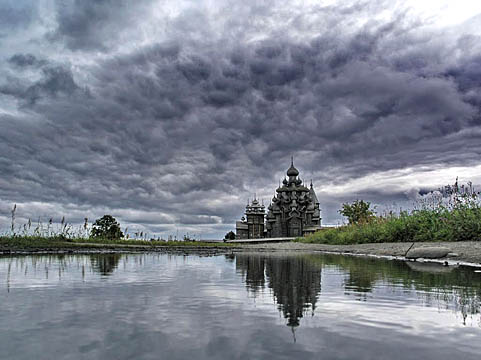
The
wooden Church of the Transfiguration on Kizhi Island in Lake Onega,
Karelia (1714). The smaller, ten-domed Intercession Church (also
known as the "winter church") was built in 1764. The entire
island of Kizhi is a museum of wooden architecture (see the many
Panoramio photos).
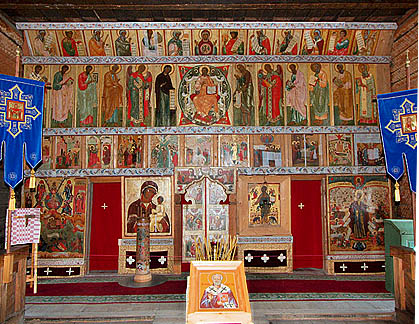
Iconostasis
of the Transfiguration Cathedral. At this time the iconostasis is in
Petrozavodsk until restoration of the Transfiguration Church is
completed (scheduled completion is 2014, the 300th anniversary of the
church)
Photos Kizhi
Island Museum
Solovetsky Monastery
1429
- 1566
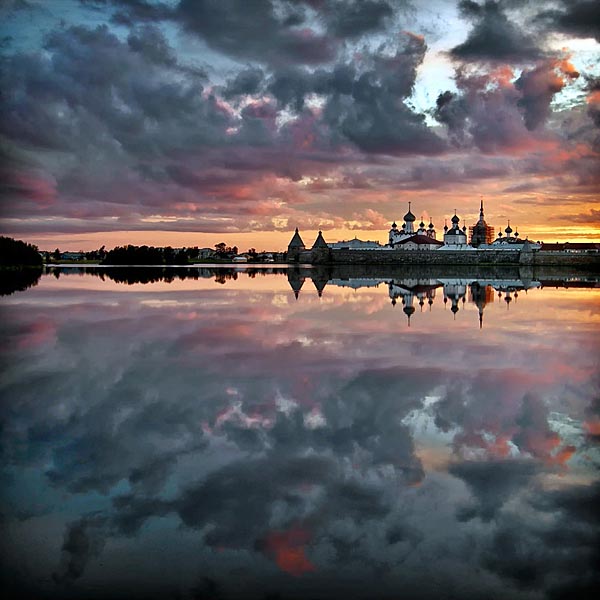
Photo
posterous.com
The Monastery on its island in the White Sea in a mid-summer
night
Solovetsky Monastery was founded in 1429 by monks German (Herman) and Savvatiy (Sabbatius) of Kirillo-Belozersky Monastery. It was the greatest citadel of Christianity in the Russian North before being turned into a special Soviet prison and labor camp (1926–1939), which served as a prototype for the GULAG system. Situated on the Solovetsky Islands in the White Sea, the monastery braved many changes of fortune and military sieges. Its most important structures date from the 16th century.
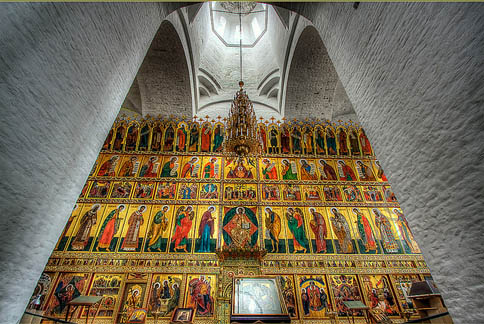
Photo
flickr
Iconostasis,
Cathedral of the Transfiguration of Our Saviour, Solovetsky
Monastery, 1558-1566